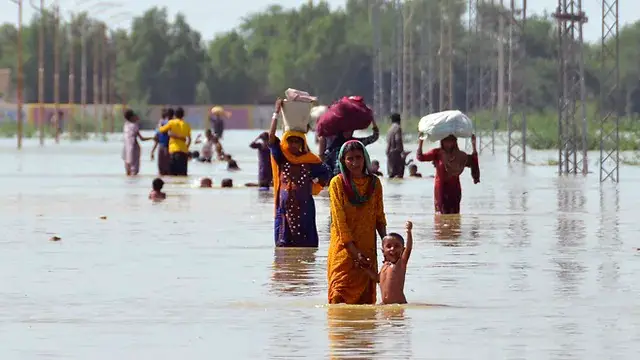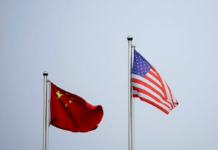Pakistan falls in the third quartile of The Global Energy Institute’s International Energy Security Risk Index – fourth quartile indicating extreme risk. Indonesia – a country that gained independence just two years after us in 1949 and has more than double our energy demand, falls in the first quartile. Despite some unremarkable progress over a decade, our energy sector isn’t showing sufficient markers of growth to serve its enormous population of 240+ million. 12 million Pakistanis lived without electricity in 2021 and more than half of us live in rural areas with barely functional energy infrastructures.
How Pakistan got into this debacle includes a plethora of reasons from aging infrastructure, superfluous policies, disproportionate urbanization, line losses, high transmission and distribution (T&D) costs, ill-formulated tariffs, dysfunctional governance, geopolitics, inept independent power producers (IPPs), technological constraints, system failures, corruption, and harsh climate, to name a few. As power outages last 12+ hours in some areas, it’s crucial to discuss Pakistan’s energy resilience or the lack thereof.
Energy resilience mainly comes in two forms: grid and community resilience. While grid resilience is more about mechanical infrastructures, community resilience envelops the broader idea of a community’s readiness to stay as close to its baseline living standard as possible during an outage. Unfortunately, Pakistan’s energy industry hasn’t been able to attain either. Literature shows that more than 90% of power disruptions happen on the grid and one of the suggested solutions is decentralization – distributed energy resources (DERs) e.g., solar and battery storage.
That brings us to community microgrids – decentralized energy systems that island from the macro-grid and provide transient communal power. There is growing literature on how solar (microgrids) can crack the code on Pakistan’s resilience nuisance. While on paper, it seems like a panacea to our energy issues, many of its caveats are discounted. Even in developed countries, community microgrids are awfully expensive and failure to establish lucrative revenue streams threatens their future. Despite the cost declines, solar panels’ efficiency is debatable, and their batteries, maintenance, safety, and control systems are costly as difficult market penetration and ambiguous regulatory frameworks worsen things.
Due to high upfront costs, who pays for community microgrids remains a big question. Without hefty subsidies, they don’t attract entrepreneurs and if the government invests, customers ultimately foot the bill. With only about $1500 Gross Domestic Product (GDP) per capita (International Monetary Fund (IMF)) and 40% population below poverty (2023) (World Bank), the last thing Pakistanis need is having to pay for experimental “disruptive technologies”. On that note, though ‘willingness-to-pay’ (WTP) surveys indicate the public’s cost-sharing eagerness, they’re subject to interpretation and high-income customers might show more willingness when they can afford their private microgrids anyway. Hence, what these surveys suggest could exacerbate energy inequity.
The National Electric Power Regulatory Authority (NEPRA) is trying to promote microgrids through its National Electricity Policy (NEP) 2021, but these projects are only a tool in the toolkit for the ‘last mile of electricity’. It’s critical to realize that resilience is not just an energy problem; it’s socioeconomic and geopolitical in nature. Grid hardening, weatherization, removing political, regulatory, and bureaucratic barriers, efficient natural resource utilization, policy revisions, alleviating inflation, research, data transparency, reliable baseload supply, ease-of-doing business, and public awareness are some essential steps to achieving resilience. Resolving water conflicts to tap into our hydro potential to the fullest is crucial; especially tackling land identity politics to address the not-in-my-backyard (NIMBY) matters.
For our crumbling economy, making audacious claims that solar microgrids can solve the energy crisis is credulous. These systems struggle even in the developed world, and Pakistan cannot afford to worsen poverty with the false hope of such ‘environment-friendly’ gimmicks. Furthermore, the Environmental Kuznets Curve (EKC) suggests that as a country’s per capita income passes a cut-off, emissions decline. Most microgrids rely on diesel backup nonetheless so ‘clean energy’ is a self-defeating argument here. The ‘who pays’ problem still lurks for ‘zero-emission’ solar since it remains largely unreliable with a low capacity factor.
In a just world, emissions or power outages cannot be bigger issues than poverty. If anything, there’s a power oversupply in our country (Thomson Reuters). Most of Pakistan’s population is clustered in a dozen of big cities so it’s no surprise that resilience can’t be achieved in remote areas as they constitute for a small part of the grid. Resilience is inherently local and could mean different for each community, depending on its unique obstacles. Whether it’s grid or community resilience, it’s pivotal to tackle energy resilience as a socioeconomic matter.






